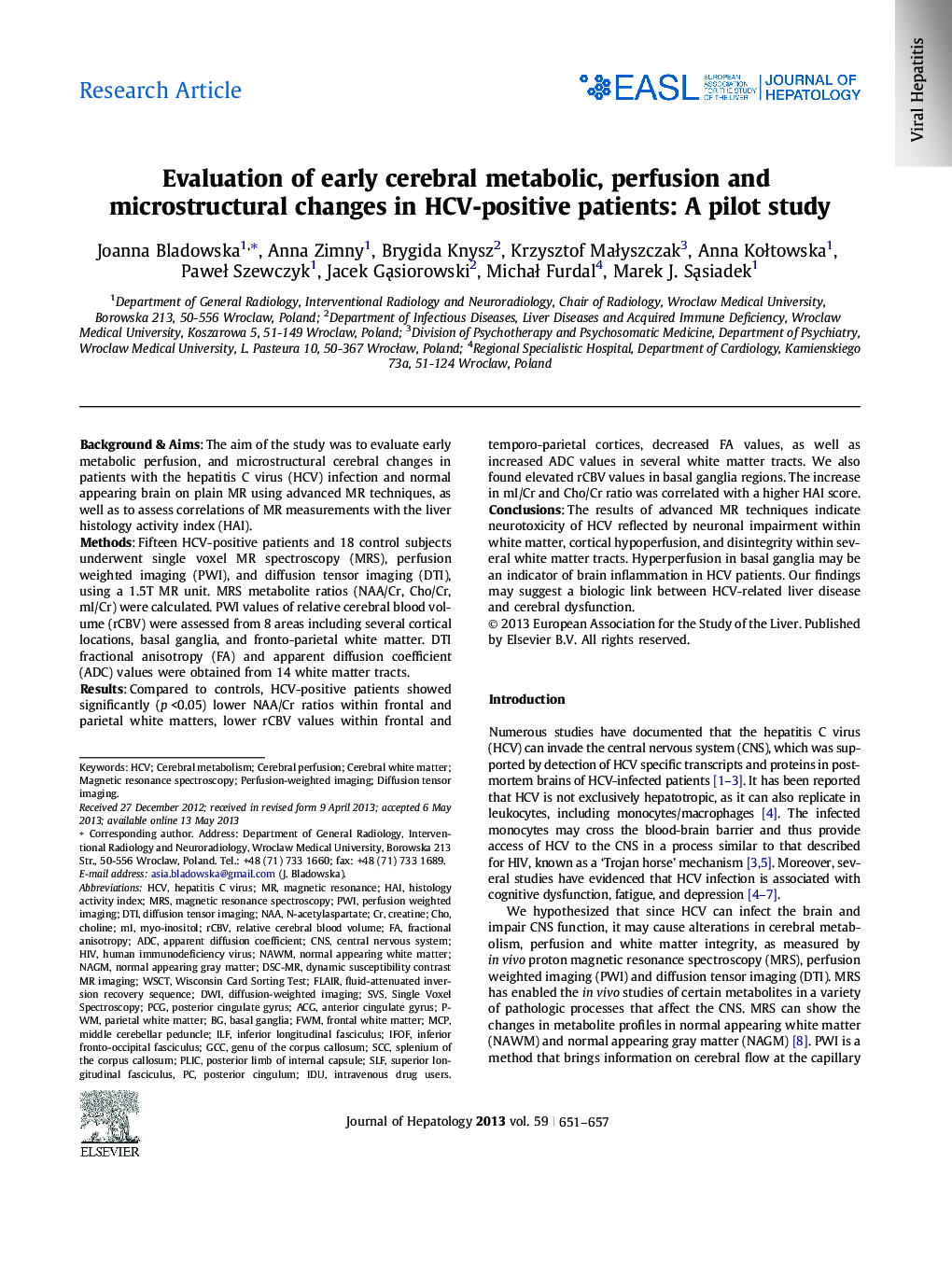| Article ID | Journal | Published Year | Pages | File Type |
|---|---|---|---|---|
| 6103761 | Journal of Hepatology | 2013 | 7 Pages |
Background & AimsThe aim of the study was to evaluate early metabolic perfusion, and microstructural cerebral changes in patients with the hepatitis C virus (HCV) infection and normal appearing brain on plain MR using advanced MR techniques, as well as to assess correlations of MR measurements with the liver histology activity index (HAI).MethodsFifteen HCV-positive patients and 18 control subjects underwent single voxel MR spectroscopy (MRS), perfusion weighted imaging (PWI), and diffusion tensor imaging (DTI), using a 1.5T MR unit. MRS metabolite ratios (NAA/Cr, Cho/Cr, mI/Cr) were calculated. PWI values of relative cerebral blood volume (rCBV) were assessed from 8 areas including several cortical locations, basal ganglia, and fronto-parietal white matter. DTI fractional anisotropy (FA) and apparent diffusion coefficient (ADC) values were obtained from 14 white matter tracts.ResultsCompared to controls, HCV-positive patients showed significantly (p <0.05) lower NAA/Cr ratios within frontal and parietal white matters, lower rCBV values within frontal and temporo-parietal cortices, decreased FA values, as well as increased ADC values in several white matter tracts. We also found elevated rCBV values in basal ganglia regions. The increase in mI/Cr and Cho/Cr ratio was correlated with a higher HAI score.ConclusionsThe results of advanced MR techniques indicate neurotoxicity of HCV reflected by neuronal impairment within white matter, cortical hypoperfusion, and disintegrity within several white matter tracts. Hyperperfusion in basal ganglia may be an indicator of brain inflammation in HCV patients. Our findings may suggest a biologic link between HCV-related liver disease and cerebral dysfunction.
